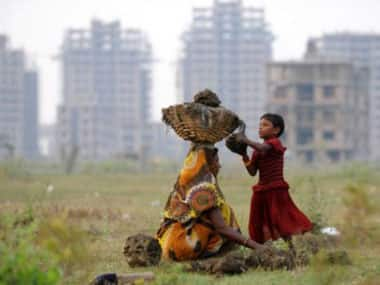The world cannot stop applauding President Xi Jinping’s “stunning” policy changes announced in the third plenum of the 18th central committee of the Chinese communist party. Some have gone so far as to put it on a par with the economic revolution unleashed by Deng Xiaoping in the late 1970s. President Xi wants to give markets a ‘decisive’ role in the economy - so far they had a ‘basic’ role. In China, semantics matter.
The communiqu says that interest and exchange rates will be deregulated. More competition will be allowed in financial services so that private enterprises, which are generally not serviced by the state-owned banks, and have to pay very high rates of interest, get easier access to credit. The commission, which supervises the 100 biggest SOEs (state-owned enterprises), says its primary concern will be to manage state capital rather than state assets; which means it will be chasing profitable growth. In many ways, this is a “stunning” u-turn for China, and that’s why the applause is still resonating across the world.
But let’s look at this a bit more closely, and compare it to our own economic reforms since 1991. To be honest, India has done very well on these fronts, relative to China. Deposit rates here have been deregulated, unlike in China where the central bank still sets them. This financial repression in China is responsible for the boom in cheap credit and over-investment by state entities in infrastructure, industrial capacity and housing. But India’s regime is much more even, with little discrimination between public and private enterprises.
India also does better on the currency. The rupee may not be convertible on the capital account, but most individuals and corporates will not find the residual restrictions pinching. As against this, China has kept its currency undervalued for a long time to promote exports and discourage imports. Over the past few years the renminbi has appreciated from 8.5 to the dollar to 6.07, but US officials say it is still undervalued. All China is taking are tiny steps by making its currency convertible on the capital account in the Shanghai Free Trade Zone, inaugurated on 29 September.
Impact Shorts
More ShortsIf the lessons learnt from the pilot are positive, the experiment will be extended to other free trade zones and then to the entire country, in keeping with China’s policy of opening up gradually, or ‘crossing the river feeling stone from stone.’
Now let’s compare our farmers. The Chinese communiqu promises to give proprietary rights to land. Currently, they have lease rights which can be transferred. But land belongs to the state, enabling provincial governments to confiscate it at low rates of compensation. Since they have huge spending obligations, but a thin slice of the tax revenue, they are forced to fall upon land sales to meet the gap. And because infrastructure development can jack up the prices of adjacent land, local governments have an inbuilt incentive to over-invest.
As against China’s hapless farmers, India’s enjoy much greater protection under the law. For one, they have proprietary rights, although until recently they got very low rates for land acquired by the government. The new land acquisition bill, which arose from the outcry over land grabs for special economic zones, gives the farmers a much better deal. For instance, just last week there were reports of how 117 women crorepatis were created in Sanand in Gujarat with one stroke of the pen, as the government paid almost Rs 800 crore in compensation to farmers whose lands were acquired.
President Xi’s reform agenda is silent on ‘hukou’, or the household registration system, which is an internal passport that ties peasants down to their villages, and denies equal citizenship in the towns and cities they migrate to work. Contrast this with the situation in India, where internal migration is totally free and unrestricted. Having said this, both the countries need to address the inequality that exists between urban and rural standards of living.
Some of China’s unfinished tasks outlined in the communiqu also apply to India. For instance, railways remain a government monopoly in India, as in China, though China’s railways are far larger, more efficient, more modern and truly the locomotive of the Chinese economy.
Though competition has been allowed in oil exploration, refining and trade, India’s system of giving subsidies only to state-owned enterprises blunts efficiency. Like in China, reforms in this sector are a work in progress.
The electricity sector in both countries is wasteful. In China, tariffs are suppressed but coal prices are market-determined, plunging the utilities in red ink.
China’s state-owned banks have been restructured over the past decade and some of the world’s biggest banks are Chinese. But they have fattened on state-investment projects, which will now be opened up for competition.
[caption id=“attachment_288349” align=“alignleft” width=“380”]  In many ways, India is farther down the road to reform than China. But China tends to be more decisive when it decides to makes changes while we blunder along[/caption]
India’s banking system is more modern and competitive, but state-owned banks with their huge portfolio of bad loans are on a slippery slope, and could go the way of other sick state-owned enterprises like Air India, BSNL and MTNL.
As can be seen from the above comparison, those who rue India’s “hopeless” situation versus China need to develop a more nuanced vision. While China has to make painful adjustments to first dismantle and then reconstruct a modern financial architecture, India has built a generically competitive, open and liberal system. China’s task is to make difficult u-turns, while all India has to do is push firmly along the road already taken. But unfortunately, what one sees in China is greater purpose and determination, while India grapples with self-doubt and half measures. Alas!


)

)
)
)
)
)
)
)
)



